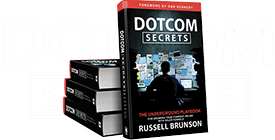Want to attract more students to your higher education institution?
Then you first have to figure out how to generate more leads.
Here’s what we are going to discuss today:
- The basics of lead generation.
- How to build a lead generation funnel.
- Top 3 lead generation strategies for higher education.
Ready to start generating more leads?
Continue reading…
Lead Generation Overview
Let’s start by defining the key concepts that we are going to be using in this article.
What Is a Lead?
A lead is a potential customer who has:
- Expressed an interest in your product.
- Provided you with their contact details (typically an email address).

Note that a person has to meet both of these criteria to be considered a lead. Simply expressing interest is not enough.
For example:
Someone who has visited your institution’s website has expressed interest in it by doing that but you should not consider them a lead until they have given you their email address.
What Is Lead Generation?
Lead generation is the process of converting potential customers into leads by persuading them to give you their contact information.

Once they do that, they become a lead and enter your sales funnel.
What Is a Lead Generation Funnel?

When it comes to generating leads online, it’s typically done via a lead generation funnel:
- You create a lead magnet.
- You create a landing page for that lead magnet.
- You drive traffic to that landing page.
The beauty of this approach is that it’s scalable.
Meaning, once your lead generation funnel is all set, everything except driving traffic is completely automated.
This stands in stark contrast with manual lead generation methods such as cold calling that are subject to human limitations (there are only so many calls you can make on any given day).
How to Build a Lead Generation Funnel
So how can you build an effective lead generation funnel?
Step #1: Identify Your Unique Selling Proposition
You should start by figuring out what makes your higher education institution better than competing institutions.
Note that this isn’t about coming up with a marketing word salad.
Everyone in your industry is already talking about “great education”, “career opportunities”, “future prospects”, and so on.
Doing the same won’t make you stand out, it will make you indistinguishable from everyone else.
Instead, determine what unique value your institution provides, then use that unique selling proposition to differentiate yourself.
And if there simply isn’t any unique value that you can offer, then start by addressing that first.
For example:
Southern New Hampshire University used to struggle to differentiate themselves from other similar institutions.
“The university’s longtime bread-and-butter strategy had relied on appealing to a traditional student body: 18-year-olds, fresh out of high school, continuing their education. Marketing and outreach were generic, targeting everyone, and so were the policies and delivery models that served the school.”
However, once the SNHU revamped their “distance learning” program to better serve its target demographic, non-traditional students (those getting their college degree later than usual, typically defined as 24+ years old), they had a unique selling proposition:
It became an incredible place for non-traditional students to get a college degree remotely.
It wasn’t just that a distance learning program was available, since there were plenty of programs like that all around the country.
What really made the difference is tailoring the experience to the needs of non-traditional students as well as providing support to them all throughout their studies.
You can read more about this in Harvard Business Review:
“Know Your Customers’ “Jobs to Be Done””
You need to figure out how your higher education institution can find or create a unique selling proposition like that.
What genuinely makes it a better option than other places?
Step #2: Conduct Extensive Customer Research
Simply identifying your unique selling proposition is not enough.
You need to be able to convey the value that you offer to your potential customers.
And in order to do that, you need to understand them better than they understand themselves.
No, that’s not an exaggeration, you really do need to become an expert in the psychology of your potential customers if you want to be effective at lead generation.
Here are some of the questions that you should be asking:
- What do they value?
- What are they proud of?
- What are they ashamed of?
- What are they struggling with?
- What are they trying to achieve?
- How do they see themselves?
- How do they want to be seen by others?
- What is their current life situation?
- What do they want in life?
…etc.
This isn’t a creative writing exercise, though.
You shouldn’t come up with answers, you should get out there and find the answers. How?
Simple:
- Figure out where your potential customers hang out online.
- Observe the conversations happening there.
Also, go out of your way to talk to your potential customers in person and really listen to what they have to say.
Keep in mind that the better you understand your potential customers, the better you’ll be able to communicate the value that you offer.
And that’s what marketing, including lead generation, is ultimately all about.
Step #3: Create a Lead Magnet That Provides Genuine Value
A lead magnet is a freebie that you offer to potential customers in exchange for their email address.
It can be anything that they can download to their device or access online:
- An ebook.
- A webinar.
- A video course.
..etc.
There’s also an advanced type of lead magnet that is called “FREE + shipping” lead magnet where you offer the potential customer a physical product for free but ask them to pay for shipping.
Say, one of our lead magnets is our co-founder Russell Brunson’s book “DotCom Secrets” that you can get for free if you cover the shipping ($9.95 within the US, $19.95 internationally).
This type of lead magnet could work well in the higher education industry. Why?
Because someone who’s researching their education options is likely to be willing to spend ten bucks on information that might help them make the right decision.
However, whether you choose to offer a digital lead magnet or a physical one, what matters is that:
- It provides a solution to a problem that the potential customer is struggling with,
- That problem is related to your unique value proposition.
Say, if like Southern New Hampshire University, you decide to target non-traditional students, then your lead magnet should provide a solution to one of the problems that people who want to get a college degree later in life might encounter.
A lead magnet is not a promotional booklet, though. It should genuinely help the potential customer overcome a challenge that they are facing.
Remember:
Now is the time to provide value, not make your sales pitch.
Step #4: Create a Landing Page for Your Lead Magnet
Your lead magnet needs a separate landing page. What’s that?
A landing page is a web page designed with a single goal in mind. In this case, that goal is to persuade the potential customer to get the lead magnet.
You can think of your lead magnet landing page as its “sales” page because it’s where you “sell” your lead magnet (show the potential customer how it will make their life better).
Landing page copywriting is a subject that we can’t cover in any depth here due to space limitations, but the most important principle that you need to understand is the distinction between features and benefits:
- A feature is a quality or a function of a product (e.g. “These shoes are waterproof!”).
- A benefit is the value that the potential customer will derive from that product (e.g. “These shoes will keep your feet dry!”).
People buy based on benefits, then justify the purchase based on features.
Consequently, if you want to be persuasive, you need to sell on benefits, then support those benefits with features.
Also, keep in mind that “selling on benefits” doesn’t just mean stating “Here is the benefit A, here’s the benefit B…”.
It also means painting an image of how the potential customer’s life could look like if they purchased the product (or, in this case, downloaded the lead magnet).
Continuing with the waterproof shoes example, you shouldn’t just say “These shoes will keep your feet dry!” and leave it at that, you also want to paint a picture of enjoying the great outdoors, being adventurous, jumping in puddles, etc.
The exact imagery that you should conjure depends on what your potential customer wants in life, which you should know if you have done your homework aka customer research.
That being said, this is just a glimpse into landing page copywriting, so if you want to learn more, check out this article:
“10 Tips For Killer Lead Generation Landing Pages”
Top 3 Lead Generation Strategies for Higher Education
Once your lead generation funnel is all set up, it’s time to start driving traffic to it.
Here are three ways to do that:
Lead Generation Strategy #1: Paid Advertising
We believe that paid advertising is the most straightforward way to drive traffic to your lead magnet landing page. Why?
Because it’s:
- Quick.
- Targeted
- Predictable
So pick an advertising platform that your potential customers frequent, set a small ad budget, and start sending traffic to your lead magnet landing page.
You will soon know whether your messaging, lead magnet and landing page copy resonates with your target audience. And it doesn’t? Then go back to the drawing board!
Also, if you aren’t sure which advertising platform to choose, experiment with Facebook, Instagram, and LinkedIn. See which one works best, then start pouring more resources into it.
Lead Generation Strategy #2: Niche Website
Building a niche website that provides information that is relevant to your potential customers can be a great way to get organic search traffic from Google.
It boils down to:
- Creating SEO content that is designed to rank on the first page of Google’s search results for specific keywords.
- Building backlinks to that content by getting credible websites to link to your website (this is most commonly done via guest posting).
You can learn the basics of keyword research in under 10 minutes with this video:
Note that creating a generic website for college students is likely to be extremely ineffective in terms of generating leads.
What you want to do is create a niche website that targets your ideal customers as opposed to just anyone and everyone who might want to go to college at some point in their lives.
Say, if like Southern New Hampshire University you decided to focus on non-traditional students, then it would make sense to create a niche website that provides information relevant to non-traditional students.
Once you start getting organic search traffic from Google, you want to direct that traffic to your lead magnet landing page by promoting the lead magnet under each post as well as with an exit-intent pop-up.
You might also want to check out this guide to optimizing your website for lead generation:
“How To Generate Leads From A Website In 2021 – Full Guide”
Just keep in mind that search engine optimization (SEO) is a long game. Be prepared to invest at least 12 months in your niche website before you start expecting results.
Also, make sure that you spend at least 50% of your time building links because great content simply isn’t enough to rank on Google anymore.
Lead Generation Strategy #3: YouTube
YouTube is the largest video hosting platform in the world that has more than 2.2 billion users worldwide.
It’s probably safe to say that your potential customers are watching YouTube on a regular basis. So why not try to reach them there?
You can do so by creating a YouTube channel that provides information relevant to your target audience.
Just like with websites, you don’t want a generic college channel, you want a niche channel that appeals to your ideal customers.
You can find popular keywords by typing a related term into the YouTube search bar, then looking at the search suggestions. These suggestions are the keywords that you should target!
For example:
If you type in “non-traditional students”, you might see suggestions like this:

Also, the video medium is great for helping potential customers envision how their life would be better if they chose to study in your institution, so you should also use your videos to paint that picture.
What’s Next?
Okay, so now you have a lead generation funnel, which should help you bring in more leads.
But you still need to convert those leads into paying customers aka students. So what’s the best way to do that?
We believe that the most effective way to sell anything online is the Value Ladder sales funnel.
That’s what we used to grow ClickFunnels from zero to $100M+ in annual revenue.
And that’s what you can use to revitalize your higher education institution.
Want to learn how to build your first sales funnel?
Our co-founder Russell Brunson, who’s arguably one of the top sales funnel experts on the planet, can walk you through it step-by-step.
In our 5 Day Challenge, you will learn how to:
- Generate unlimited leads.
- Create your first lead magnet.
- Build your first sales funnel.
- Create a simple 6-email follow-up sequence.
- And launch your funnel!
…in just five days.
So don’t hesitate.


